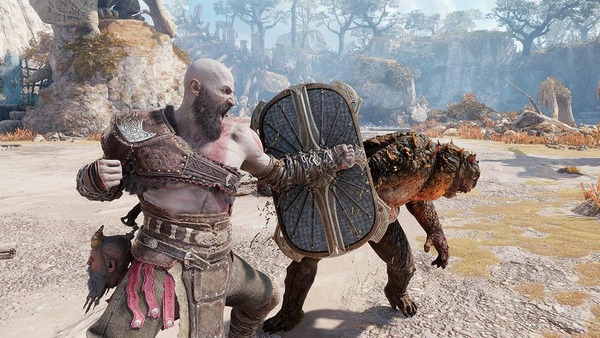Few science fiction worlds are as vast, harsh, and politically rich as the universe of Dune. Now, with Dune: Awakening, developer Funcom brings this legendary franchise into the modern age of open-world survival MMOs. It’s a daring project: merging the brutal survival elements of games like Rust or Conan Exiles with the political intrigue, spiritual depth, and world-building of Frank Herbert’s Dune saga.
Set on the desert planet of Arrakis, the game challenges players to survive its scorching storms, evade its colossal sandworms, and rise through the ranks of a society built on spice, influence, and betrayal. But this isn’t just another survival game. It’s a sandbox where players can forge their own stories, build empires, and shape the world around them — all while contending with the most dangerous force of all: the desert itself.
This article explores the journey of Dune: Awakening, from its conception to its design vision, and how it stands apart from every survival MMO before it.
1. The Vision Behind Dune: Awakening
Announced at Gamescom 2022, Dune: Awakening is the result of a partnership between Funcom and Legendary Entertainment, the rights holders of the Dune franchise. Funcom, already known for Conan Exiles, set out to create a game that honors the scope and seriousness of Dune while remaining engaging as a multiplayer experience.
The developers aimed for more than a survival sim. They envisioned an evolving online world where factions battle for spice control, political alliances shape territory, and the ever-present environment threatens to undo everything. The design goal was to blend survival mechanics with long-term MMO persistence and dynamic political gameplay.
Unlike narrative-focused RPGs or static survival worlds, Dune: Awakening is intended to be a reactive ecosystem — shaped by players, destabilized by the desert, and driven by scarcity and ambition.
2. Life on Arrakis: A Living and Lethal World
The setting of Arrakis is more than a backdrop; it is the central antagonist. Everything in the game — from the wind to the worms — is designed to make players feel vulnerable and transient in the face of nature’s indifference. Sandstorms are not decorative but world-changing events. They can shift terrain, reveal or bury resources, and threaten the integrity of player settlements.
The terrain is vast, seamless, and layered with hidden caves, spice fields, and ancient ruins. Unlike typical open worlds, Arrakis is fluid and unpredictable. A safe zone today could be a worm pit tomorrow. Players must constantly adapt, scout, and strategize to survive.
This unpredictability is a crucial mechanic. It discourages static bases and favors mobile operations, risk-reward decision-making, and environmental awareness — turning every expedition into a calculated gamble.
3. Core Survival Mechanics: Beyond Thirst and Hunger
Survival in Dune: Awakening goes deeper than just drinking water and avoiding heat. Players must manage hydration, body temperature, and exposure to storms, all while navigating the psychological and strategic demands of resource competition.
Basic survival tasks like foraging, crafting, and shelter-building are just the beginning. Players will need to set up mobile spice harvesters, maintain windtraps to extract moisture, and upgrade gear that protects them from the elements.
Unlike other survival games, progression isn’t just vertical. Mastery means learning how to live with the desert, not just dominate it. Players can die from misjudging a storm’s path or mining too aggressively and attracting a sandworm.
4. Factions, Politics, and the Player-Led Economy
One of the most exciting promises of Dune: Awakening is its faction-based politics and player-driven economy. Players can join or found groups aligned with smugglers, noble houses, or native Fremen clans. These factions control territory, tax spice trade, and form alliances or declare wars.
Politics are not merely window dressing. Funcom aims to make diplomacy and betrayal central gameplay systems. Agreements can shape trade routes, influence worm activity zones, or open paths to rare resources.
Economically, spice is king. Players harvest it at great risk, refine it, and trade it on a dynamic market. Scarcity, regional control, and player conflict drive its value. Everything from base-building materials to rare technology flows through this evolving economic structure, allowing real competition and collaboration to flourish.
5. Combat Systems and Strategic Warfare
Combat in Dune: Awakening blends tactical positioning with real-time action. Players can use melee weapons, ranged arms, grenades, and gadgets. Funcom has also introduced deployable tech — like auto-turrets, shield projectors, and environmental hazards.
Personal shields, a staple of Dune lore, are carefully integrated. They deflect high-speed projectiles but are weak to slow strikes, encouraging players to vary their approach. This makes one-on-one fights more tactical than twitch-based.
Warfare between factions may include skirmishes, territory control, and spice war events. It’s not just about killing opponents — it’s about capturing zones, defending infrastructure, and surviving the retaliation that follows.
6. Sandworms, Storms, and Natural Threats
No Dune experience would be complete without sandworms. These iconic beasts are more than random events. If players harvest too much spice, use heavy equipment, or stay still too long in open desert, they may trigger a worm encounter.
Worms are massive, destructive, and impossible to kill. They force players to evacuate, sacrifice machines, or rethink their operations. Entire factions may lose valuable harvesters in a single mistake.
Storms also play a massive role. They can disrupt electronics, obscure vision, and reshape terrain. Combined with worm threats, this environmental design ensures no part of Arrakis ever feels safe — even for the strongest players.
7. Base Building and Resource Management
Building a base in Dune: Awakening isn’t a permanent claim to power — it’s a temporary assertion. Bases require maintenance, protection from sandstorms, and strategic placement near spice fields, water sources, or safe transport routes.
Structures can include habitation domes, harvesting rigs, defensive towers, and research facilities. Each one consumes resources and may draw unwanted attention from rival players or AI factions.
Resource management goes beyond storing materials. It’s about energy grids, moisture recycling, production efficiency, and guarding your infrastructure from raiders. Smart architecture wins wars — not just guns.
8. Lore Integration and Narrative Systems
Funcom has been careful to honor Frank Herbert’s lore while also creating space for player storytelling. The game is set in an alternate Dune timeline — allowing freedom to explore what-if scenarios without contradicting canon.
Players can explore ruins of ancient civilizations, uncover lost technology, and interact with relics from the Butlerian Jihad. NPCs representing the Spacing Guild, Bene Gesserit, or other lore-rich factions offer quests, upgrades, and backstory.
The goal isn’t just to live on Arrakis — it’s to understand its cultural and political history. That narrative layer is critical to making the world feel grounded and meaningful.































